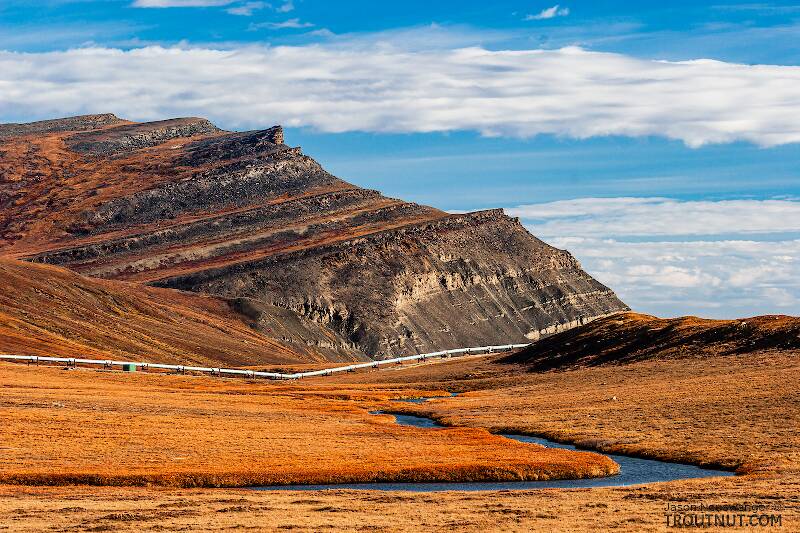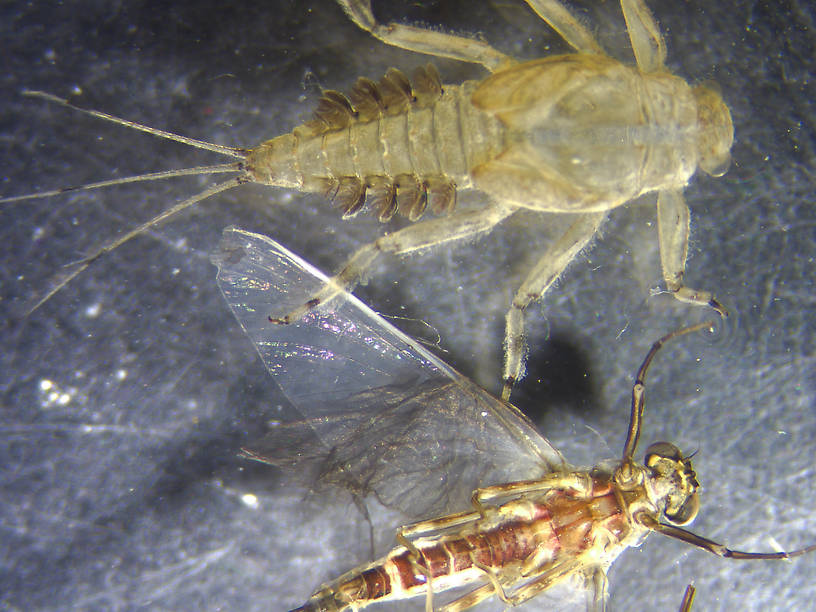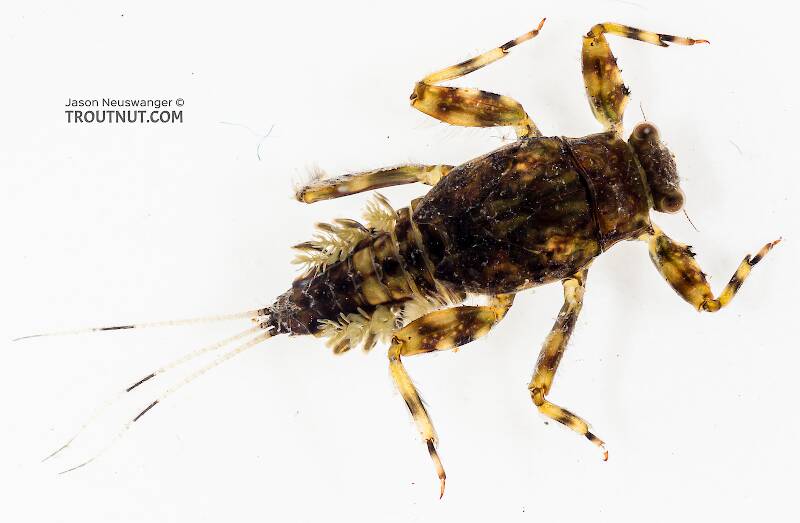
Hex Mayflies
Hexagenia limbata
The famous nocturnal Hex hatch of the Midwest (and a few other lucky locations) stirs to the surface mythically large brown trout that only touch streamers for the rest of the year.
Featured on the forum

This specimen appears to be of the same species as this one collected in the same spot two months earlier. The identification of both is tentative. This one suffered some physical damage before being photographed, too, so the colors aren't totally natural. I was mostly photographing it to test out some new camera setting idea, which worked really well for a couple of closeups.

Troutnut is a project started in 2003 by salmonid ecologist Jason "Troutnut" Neuswanger to help anglers and
fly tyers unabashedly embrace the entomological side of the sport. Learn more about Troutnut or
support the project for an enhanced experience here.
Flavs
Like most common names,"Flav" can refer to more than one taxon. They're previewed below, along with 6 specimens. For more detail click through to the scientific names.
Mayfly Species Drunella flavilinea
These are pretty much always called Flavs.
The Flavs pick up about a week after the closely related but larger Western Green Drakes (Drunella grandis and Drunella doddsii) finish hatching on most Western waters.
Their hatches may be complemented by simultaneous hatches of two less prolific species, Drunella coloradensis and Drunella spinifera.
Their hatches may be complemented by simultaneous hatches of two less prolific species, Drunella coloradensis and Drunella spinifera.
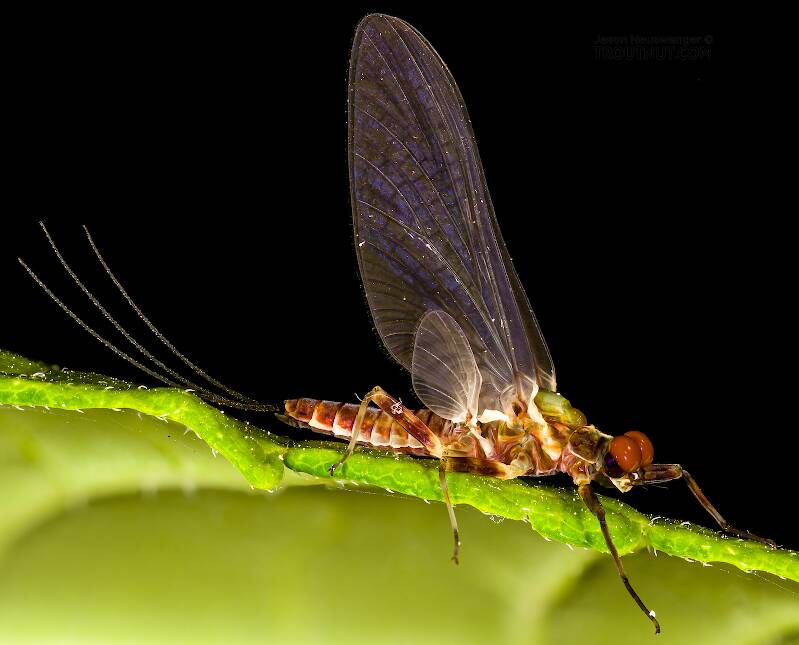
This dun is smaller than would normally be expected for Drunella flavilinea, but it seems to fit the physical description of that species fairly well. I wasn't sure from the dun pictures alone, so I was hoping it would molt into a spinner. It never made it out of the dun's shuck, but it did begin the process, which allowed me with great care to tease out the last couple abdominal segments of the spinner from the still tightly attached dun shuck, enabling a more confident ID based on the shape of the spinner's penes and sub-genital plate. I also collected a nymph of flavilinea in the same river on the same evening, as well as a shed exuvium that looked large enough to belong to an emerging dun.
The other possibility I considered for a while based on the dun was Drunella pelosa, which would be the right size, but the other characteristics don't fit.
The other possibility I considered for a while based on the dun was Drunella pelosa, which would be the right size, but the other characteristics don't fit.
See 2 more specimens...
Mayfly Species Drunella coloradensis
These are sometimes called Flavs.
This species is very similar to Drunella flavilinea. In areas where their ranges overlap, they can sometimes be found in the same streams. They are similar enough that anglers sometimes refer to either or both species as "Flavs." Allen and Edmunds (1962) say that Drunella coloradensis tends to favor colder water than Drunella flavilinea and that it may emerge as much as a month later.
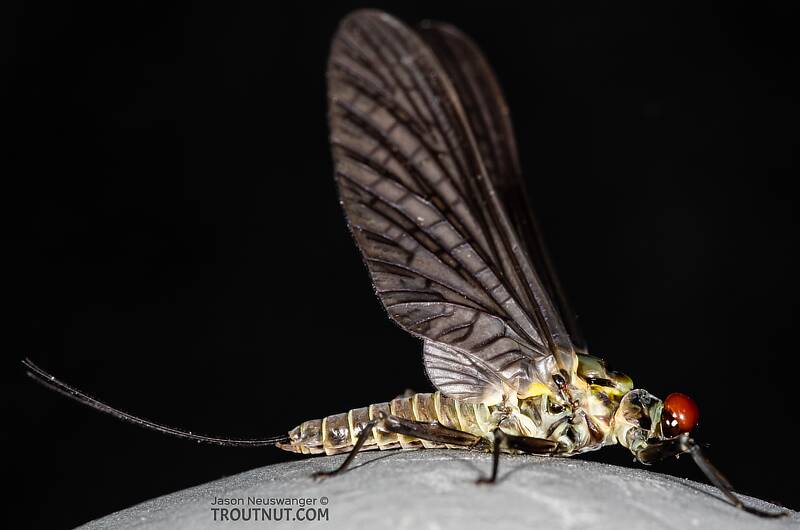
The positive species ID on this dun comes from both the spinner that it (or possibly one other dun just like it) molted into and the overwhelming abundance of nymphs of this species in my kicknet samples from the same site.
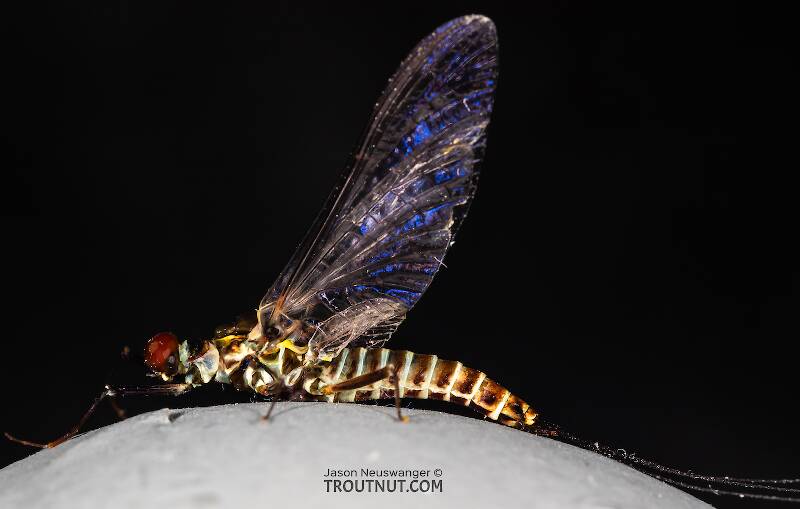
This spinner molted from this dun, or possibly one other dun I had in the same container that looked just like it.
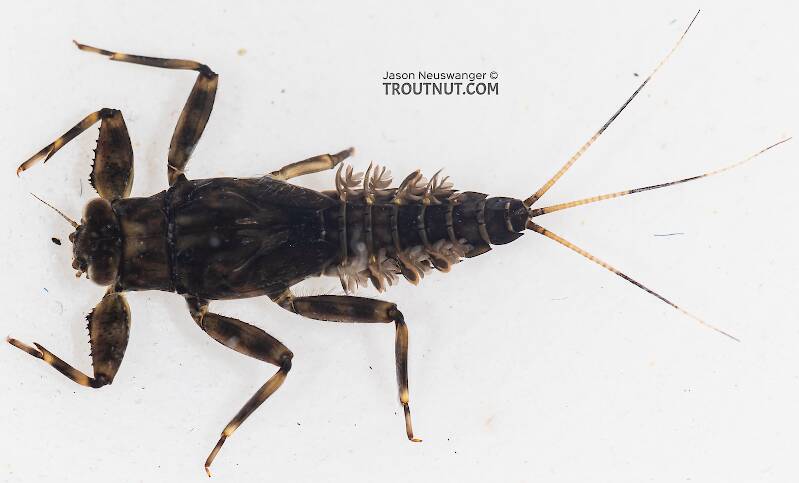
This one nicely illustrates the variation in coloration within an single Ephemerellid species in a single stream, when compared to its lighter, banded counterpart.
See 7 more specimens...

